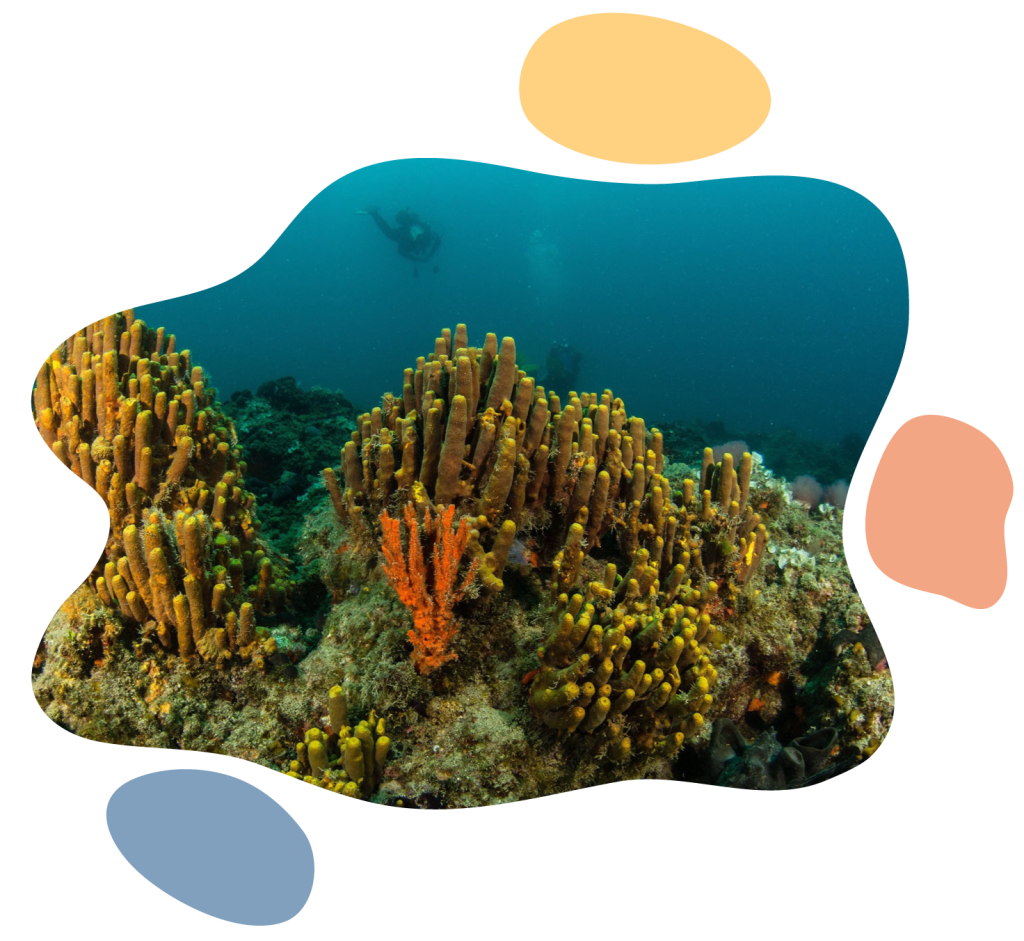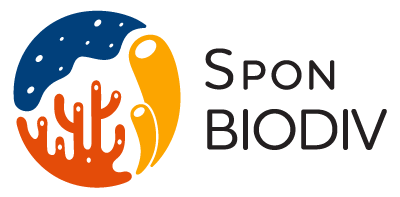The pore-bearers!
Sponges or Porifera (from the latin porus, pore + ferre, bear, hence meaning ‘pore bearer’) constitute a fairly well-defined group of animals, present in all aquatic environments in the world (seas, oceans, rivers and lakes), from the intertidal zone to the great depths and from the equator to the poles. Sponges are sessile, erect, massive, but mainly encrusting animals, forming thin layers on hard, natural and artificial substrates; however, in favourable environments such as coral reefs or deep-sea environments, can reach considerable sizes and they can constitute a significant portion of the habitat’s biomass.
The poriferans have an original organizational system that allows them to filter the surrounding water. The water entry holes in the sponges, the ostioles or inhalants pores, are distributed over the body surface. From the pores, the water runs through the body of the sponge through two networks of channels: the inhalant, that carry the water from the outside to the choanocyte chambers and the exhalant, which collects water from all the chambers and expels it outside again. The set of pores and channels is known as the aquiferous system, from which comes the name of the phylum Porifera!

